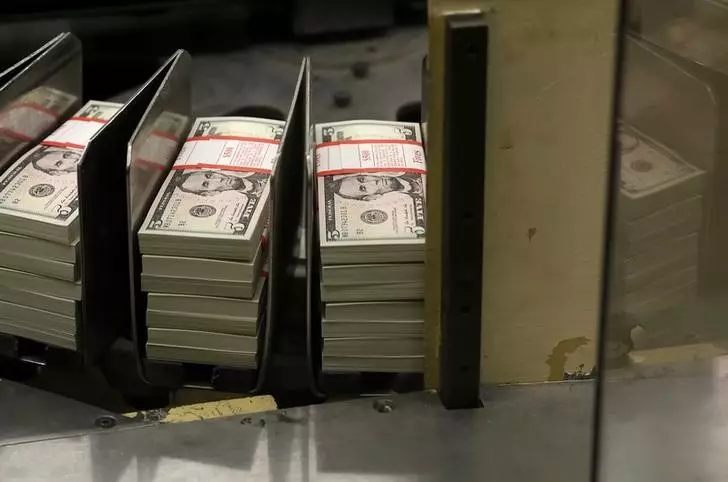As the year draws to a close, the US dollar has demonstrated notable resilience, despite a slight dip earlier this week. This article delves into the factors influencing the greenback’s performance, the implications of US economic policies, and the interconnectedness of global currencies amidst shifting market dynamics.
Recently, the Dollar Index, which measures the currency against a selection of six predominant global currencies, registered a minimal decrease of 0.1%, edging it to 107.690. While this decline may seem marginal, it underlines broader trends related to US Treasury yields. The benchmark 10-year note, which reached a seven-month peak, has experienced a backlash, dipping to 4.599%. This retreat in bond yields is pivotal because it often drives fluctuations in the dollar’s value—the correlation between bond yields and currency strength remains a cornerstone of foreign exchange dynamics.
Despite these fluctuations, the dollar continues to be buoyed by substantial year-to-date gains, approximating 7%. Such statistics reflect investor confidence amidst a landscape shaped by looming policy changes, particularly as attention turns toward upcoming economic reports and Federal Reserve meetings.
The ascension of Donald Trump to the presidency has wrought significant shifts in the economic landscape, heavily influencing perceptions of the dollar’s future. His administration’s focus on deregulation, tax reductions, and trade measures such as tariff increases were initially expected to stimulate economic growth and subsequently drive inflation upwards. Consequently, this anticipation has led to the Federal Reserve’s cautious stance regarding the potential for rapid interest rate cuts, with projections indicating only two modest alignments in 2025.
This environment of restrained easing suggests a tightrope walking act for investors and policymakers. While the market has begun to price in only marginal declines in interest rates, the uncertainty of the political sphere adds layers of complexity to forecasting the dollar’s trajectory.
The performance of other currencies likewise illustrates the intricate web of global economic relations. For instance, the euro saw minor gains, with the EUR/USD pair inching up to 1.0439, reflecting fresh inflation data from Spain which indicated an uptick from 2.4% to 2.8% year-on-year. Such developments put the European Central Bank (ECB) in a precarious position, balancing the need for growth against rising inflation pressures.
The ECB’s recent interest rate cuts suggest an attempt to rejuvenate a stagnating economy, yet the unexpected rise in inflation hints that significant cuts may be put on hold. Statements from members of the ECB, like Robert Holzmann, imply that any further downturn in rates needs careful consideration in light of inflation, underlining the complexity of monetary policy in the Eurozone.
Turning to Great Britain, the GBP/USD pairing noted a slight increase to 1.2595. However, anticipation of the UK manufacturing PMI data—which is expected to portray a contraction—creates a tempered outlook for the British economy. The Bank of England’s recent 6-3 vote to maintain current interest rates signals growing concerns over economic stability.
In Asia, the USD/JPY exchange rate remained relatively unchanged at 157.76, hovering near five-month highs. The persistent risk of intervention by Japanese authorities looms, as their monetary policy remains cautiously stagnant. The Bank of Japan appears noncommittal regarding substantive rate hikes, opting instead for a measured approach reminiscent of its recent 0.25% rate hold.
The landscape surrounding the US dollar is painted with intricate dynamics stemming from both domestic policies and international pressures. The interplay of interest rates, inflation, and geopolitical sentiment offers a comprehensive outlook on currency performance. As year-end approaches, the financial markets remain on edge, awaiting critical economic indicators that could shape monetary policy trajectories and subsequently affect the dollar’s role in the global arena. Understanding these layers is essential for stakeholders looking to navigate the uncertain waters of foreign exchange trading.

